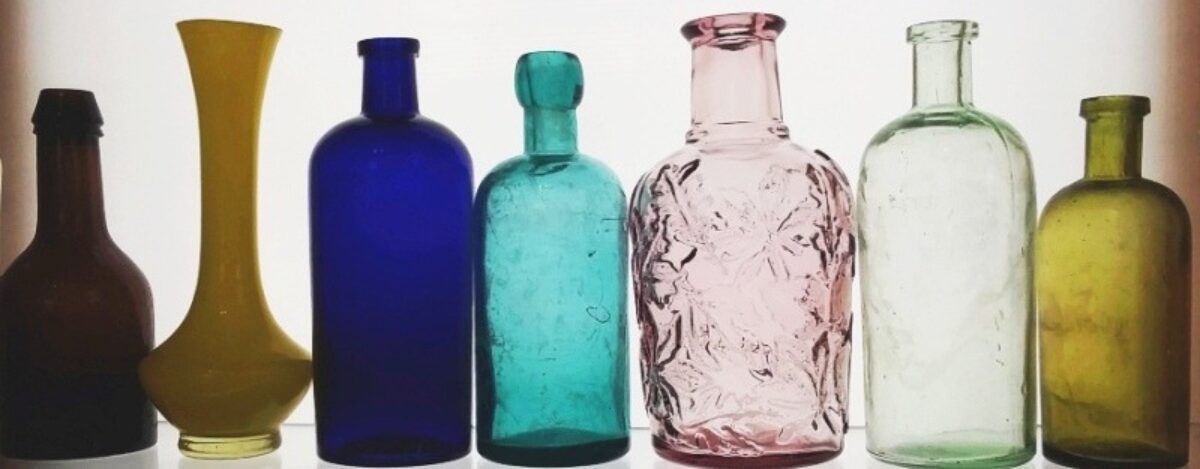“TRADEMARK LIGHTNING PUTNAM” Fruit jars
A large number of “wire bail type” glass fruit jars are found with this wording. Some bear the words “TRADEMARK LIGHTNING” on the face and “PUTNAM” along with a mold number on the base, but others are marked only on the base with the entire phrase “TRADEMARK LIGHTNING PUTNAM” and a mold number. There are several other minor variations of wording, including some units that bear the initials “H.W.P.” (for Henry W. Putnam) on the bottom along with a mold number.
Covering all variations, these “Lightning” style jars were made over a very long period of time, beginning in 1882 when Patent# 256,857 was issued to Henry William Putnam for his version of the bail wire closure device (first patented in 1875 on other types of bottles).

Basically, a wire loop and levers operated to clamp down securely onto the lid and close the jar. The “Putnam” jars were made by at least 11 glass companies, some being made into the early 1900s. Aqua is the most commonly seen color, as was typical of utilitarian glass of the time period. It is difficult, if not impossible, to know exactly which glass company made a given example of these jars.

ADVERTISEMENT
According to “THE FRUIT JAR WORKS, Volume 1” by Alice Creswick (1995), these jars are found in a very wide range of colors and several sizes, and were made by:
-
- Lyndeboro Glass Company, Lyndeborough, New Hampshire
- Edward H. Everett, Newark, Ohio
- Hazel Glass Company, Washington, Pennsylvania
- J. P. Smith & Co, Pittsburgh, Pennsylvania
- Moore Bros, Clayton, New Jersey
- Mannington Glass Works, Mannington, West Virginia
- Poughkeepsie Glass Works, Poughkeepsie, New York
- Hawley Glass Company, Hawley, Pennyslvania
- Wellsburgh Glass & Mfg CO., Wellsburgh, West Virginia
- Sydenham Glass Co., Wallaceburg, Ontario, Canada
- Dominion Glass Company, Toronto, Ontario, Canada
A number of other glass companies were also likely involved with their production at some time or other. NOTE: There are a number of modern-era reproductions of these jars on the market, especially jars in unusual and rarer colors. Some of them likely were made in the 1980s and 1990s, and were imported from Asia. Caution and careful research is advised when buying and collecting these types of jars.
Here is a good general “Question and Answer” article about collecting fruit jars written by collector and researcher Dave Hinson. He covers the basics on many types and brands of fruit jars including the “Lightning” types of jars. The article is no longer “live” on the internet but here is a link to an archived version of the webpage:
https://web.archive.org/web/20210411003832/http://www.av.qnet.com/~glassman/info/jarfaq.htm
This article has general information about the “Lightning” style fruit jars, as posted on the Healthy Canning website:
https://www.healthycanning.com/lightning-jars/
Please click here to go to my HOME PAGE.
ADVERTISEMENT

